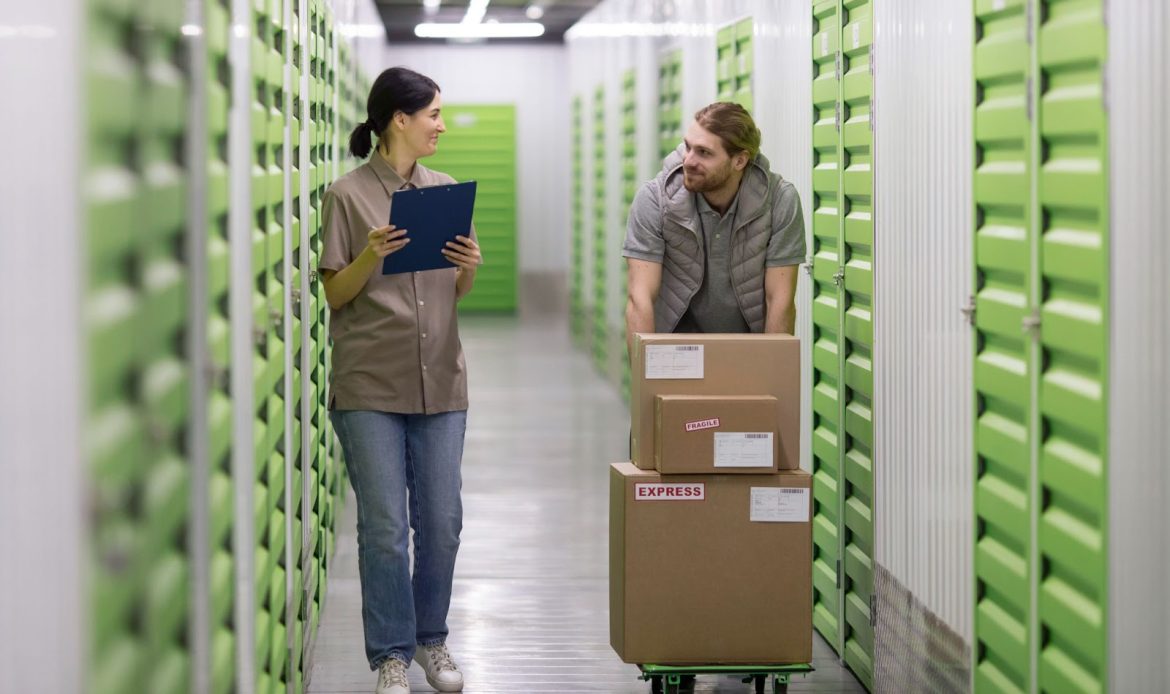Most conversations about eCommerce sustainability start and end with the same topics: recyclable mailers, carbon offsets at checkout, and slower delivery options. These matter. But for scaling brands, they only scratch the surface.
The bigger wins often sit in operations, fulfilment, and supply chain decisions that customers never see. These are the changes that reduce your environmental footprint and your costs as order volumes grow.
Here are eight sustainability wins that most eCommerce brands overlook, and why they deserve more attention.
Why Sustainability in eCommerce Goes Deeper Than Packaging
Over half of UK consumers now consider environmental factors when shopping online. That pressure has pushed most brands to rethink their packaging, offer greener delivery options, and communicate their values more clearly.
But packaging is just one piece of the puzzle. Your brand’s true “green print” includes warehouse energy use, how stock is stored and picked, where inventory sits geographically, and what happens to returned products. These operational factors often have a larger cumulative impact than the cardboard your orders arrive in.
For brands shipping hundreds or thousands of orders each month, getting these details right creates compounding benefits: lower emissions, reduced waste, and often lower costs too.
The Usual Suspects: What Most Brands Already Do
Before we get to the overlooked wins, it’s worth acknowledging the sustainability tactics that have become standard practice:
- Recyclable, biodegradable, or compostable packaging materials
- Carbon offset options at checkout
- Messaging that encourages slower, consolidated delivery
- Return and recycling incentive programmes (think MAC’s “Back to MAC” or M&S’s “Shwopping”)
These are valid steps. But they’ve become table stakes for conscious consumers. Brands that stop here risk treating sustainability as a marketing exercise rather than an operational reality.
The real opportunity lies in the decisions that happen behind the scenes.
8 Overlooked Sustainability Wins
These are the operational changes that compound as you scale. Many reduce costs while cutting emissions, making them easier to justify and sustain long-term.
1. Warehouse Energy Efficiency
Fulfilment centres consume significant energy: lighting, heating, cooling, and equipment all add up. Yet many brands don’t realise their 3PL’s warehouse energy use forms part of their Scope 3 emissions.
Simple changes make a measurable difference:
- LED lighting with motion sensors
- Energy-efficient HVAC systems
- Renewable energy tariffs or on-site solar
The question to ask your fulfilment partner: Do you use renewable energy, and can you report on warehouse emissions?
2. Pick-Path and Slotting Optimisation
How products are stored and picked affects more than speed. It also affects energy use and error rates.
Smarter slotting means placing fast-moving SKUs closer to packing stations. This reduces travel distance for warehouse staff, speeds up dispatch, and cuts the energy needed to move goods around.
It also reduces picking errors. Fewer errors mean fewer returns, less wasted packaging, and lower transport emissions from reshipping.
This kind of optimisation is invisible to most brands, but its impact grows with every order.
3. Inventory Placement Across Multiple Locations
Holding all your stock in one central warehouse means longer delivery distances, especially for customers at the edges of your delivery network.
Strategic inventory placement shortens last-mile journeys. A brand selling across the UK and EU, for example, benefits from holding stock in both regions. Orders ship from the nearest location, reducing transit time and emissions without relying on air freight.
This is especially relevant for brands selling cross-border post-Brexit, where customs delays and longer routes can increase both costs and carbon.
4. Right-Sized Packaging at Source
Many brands default to a small range of standard box sizes, regardless of what’s inside. The result: oversized boxes, excess void fill, and heavier shipments.
Right-sizing packaging at the point of despatch reduces material waste, shipping weight, and the carbon cost of every delivery. It requires coordination with your fulfilment partner, not just your packaging supplier.
As order volumes grow, the savings add up quickly.

5. Paperless Operations
Dispatch notes, invoices, packing slips, returns labels: across thousands of orders, the paper adds up.
Digital alternatives cut waste and simplify operations:
- QR codes instead of printed return slips
- Email receipts rather than paper invoices
- App-based returns processes
Some UK 3PL operations have eliminated over one million sheets of paper through paperless dispatch. It’s an easy win that also speeds up workflows.
6. Returns Triage and Refurbishment
Returns are a hidden emissions cost. Every returned item travels back, gets inspected, and often needs repackaging. In the worst cases, it ends up in a landfill.
Fast, effective returns triage keeps products in circulation:
- Inspect and grade returned items quickly
- Restock sellable goods without delay
- Refurbish or repair where possible
- Recycle responsibly when resale isn’t viable
Brands should ask their fulfilment partner: What happens to my returned stock? Is it resold, recycled, or discarded?
7. Carrier Mix and Consolidated Shipping
Not all couriers have equal emissions profiles. Some invest in electric fleets, optimised routing, or carbon offset programmes. Others don’t.
Working with a fulfilment partner that uses a mixed carrier strategy, prioritising greener options where available, can reduce your overall footprint without sacrificing delivery speed.
Consolidated shipping helps too. Batching orders to the same area means fewer trips and lower emissions per parcel.
This also ties into offering customers the option to wait for grouped deliveries, a choice many are willing to make when the environmental benefit is clear.
8. Choosing a Fulfilment Partner With Green Credentials
A brand’s sustainability is only as strong as its supply chain. Your fulfilment partner’s operations, energy use, waste practices, and reporting all affect your environmental footprint.
When evaluating 3PLs, look for verifiable credentials:
- B Corp certification: A rigorous third-party assessment of social and environmental performance
- ISO 14001: An international standard for environmental management systems
- Carbon reporting: Transparency on emissions, not just promises
- Renewable energy use: Proof, not assumption
Ask for data on their operational footprint. A good partner will be able to show you how their practices reduce your brand’s overall impact.
This is an underused lever. Most sustainability advice focuses on what brands can do directly. Fewer conversations address how to vet the partners who handle your stock, pack your orders, and ship to your customers every day.

How to Measure Your eCommerce Carbon Footprint
Carbon accounting for eCommerce is more complex than counting delivery miles. A full picture includes:
- Warehouse energy consumption
- Packaging production and disposal
- Returns transport and processing
- Last-mile delivery emissions
- Even website hosting and data storage
You don’t need to measure everything on day one. Start with the basics:
- Ask your 3PL for energy and emissions data
- Track packaging use and waste rates
- Monitor return rates and what happens to returned stock
- Review your carrier mix and their sustainability commitments
Over time, you can build toward more detailed Scope 3 reporting if that’s relevant to your industry, investors, or customers.
Build Sustainability Into Your Growth Plan
Sustainability works best when it’s built in, not bolted on. As your order volumes grow, operational efficiencies in warehousing, packaging, and returns have an outsized impact.
The decisions you make early, which fulfilment partner to work with, which packaging to use, which carriers to prioritise, set the trajectory for your brand’s environmental footprint as you scale.
Think of it as a long-term cost and brand advantage, not a compliance checkbox or a marketing angle. The brands that get this right will be better positioned as consumer expectations, regulations, and reporting requirements continue to tighten.
Frequently Asked Questions
What is sustainability in eCommerce?
Sustainability in eCommerce means online retailers adopting environmentally and socially responsible practices across their operations. This covers packaging, delivery, sourcing, warehousing, and returns, not just the consumer-facing elements.
How can eCommerce brands reduce their carbon footprint?
The most effective levers include eco-friendly packaging, optimised logistics, strategic inventory placement, choosing fulfilment partners with strong environmental credentials, and reducing returns through accurate product listings and quality control.
What are the 3 Es of sustainability?
Environment, Economy, and Equity. Sometimes called the “triple bottom line.” Eco ecommerce brands can address all three by reducing waste and emissions, improving operational efficiency, and working with ethical suppliers and partners.
Why does choosing a sustainable 3PL matter?
Your brand’s Scope 3 emissions include your supply chain. A 3PL that prioritises renewable energy, waste reduction, and efficient operations directly reduces your overall footprint, even if your own premises are carbon neutral.
What sustainability certifications should eCommerce brands look for in partners?
B Corp certification is one of the most rigorous, covering social and environmental performance. ISO 14001 signals strong environmental management. Renewable energy certificates and transparent carbon reporting are also good indicators of genuine commitment.



